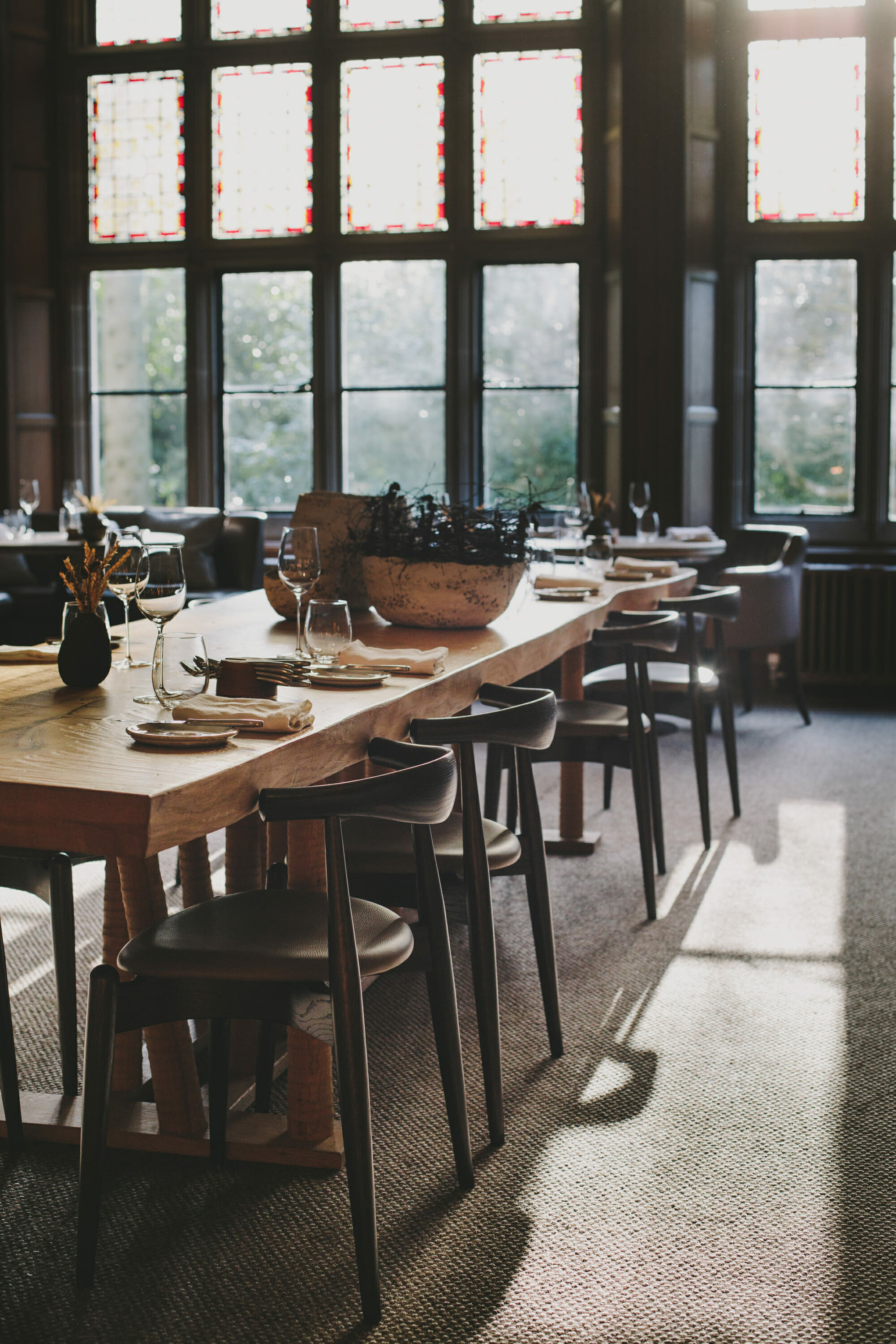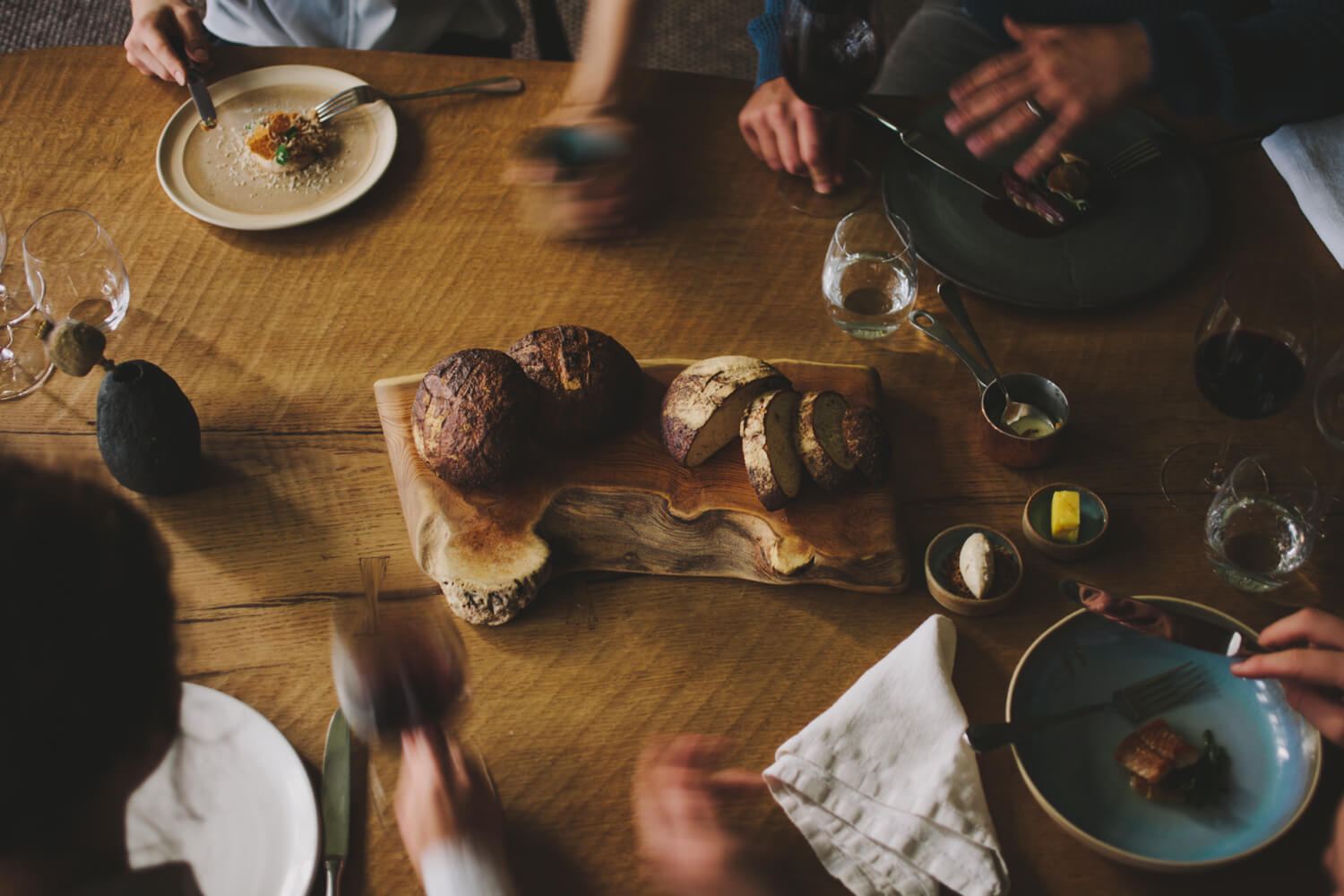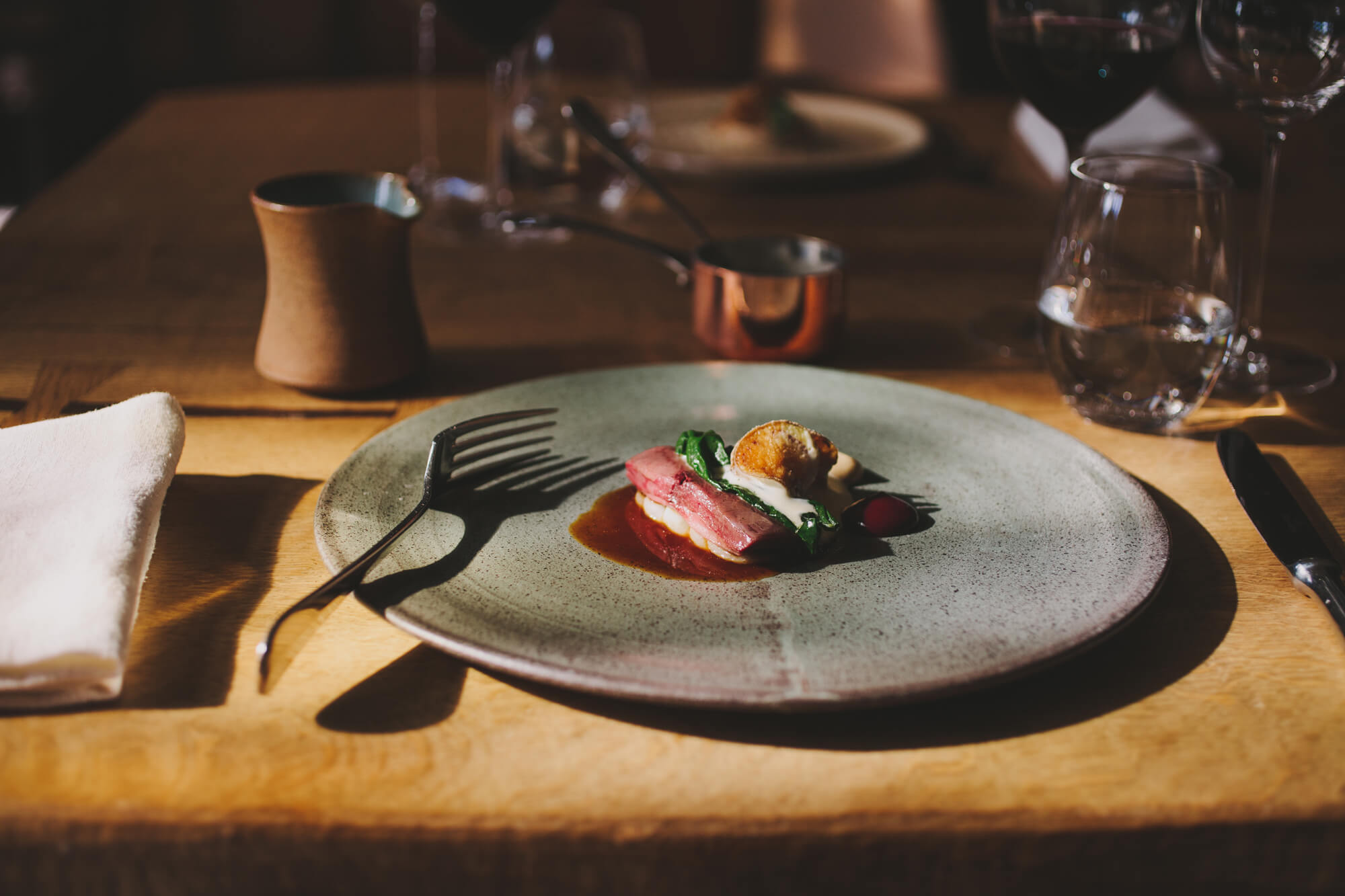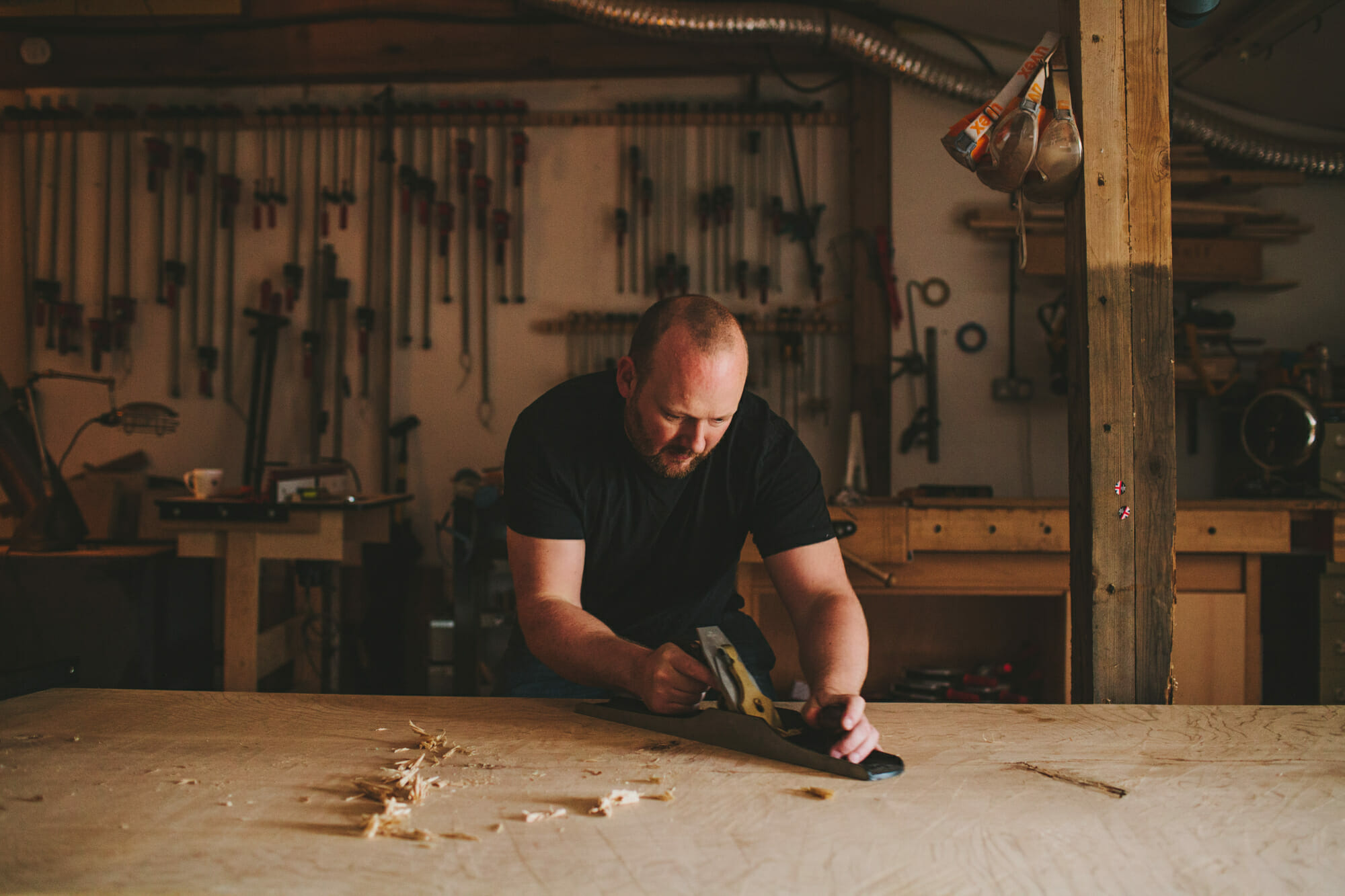
MEET THE MAKER
A BUTCHER, A BAKER, A FURNITURE MAKER
The Manor is a gallery to the works of William Self. Almost every room is gifted with one of his stunning pieces. Even now, as I sit writing this in Peel’s Restaurant, I look across to the black walnut wine station and see his telltale undulations hand carved into it. Then I scan across to the 4 metre piece of oak which takes centre stage as the main dining table in Peel’s (try to miss it, I challenge you!). Will is a pivotal part of James and Fjona’s vision for the Manor: they want to fill each room with hand-crafted materials and reintroduce the Arts and Crafts ethos into the building. They envisage the Manor becoming a hub for crafts people like Will in a Red House-esque vein. So our love is evident, time to hear if the feeling’s reciprocated…
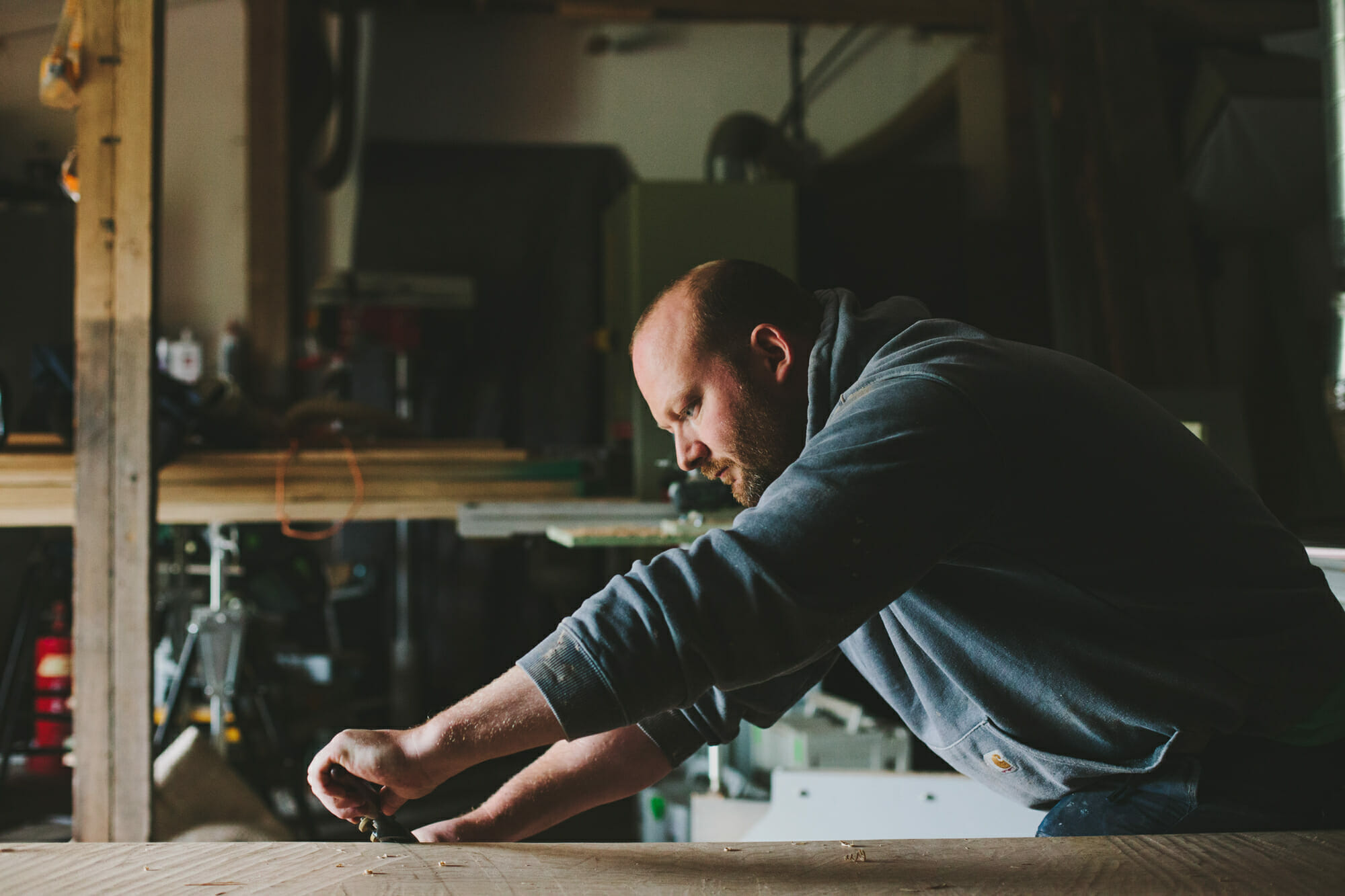
HM: You studied abstract sculpture at the Henry Moore sculpture studio before specialising in furniture design and making. How would you define the style of your furniture?
Will: The pieces I design and create are art with a practical function. Looking at the Hampton Manor dining table, for instance. The form has come from James and Fjona’s request for a table. They asked for a five meter table. I suggested that this might be more easily achieved if we made it out of two pieces of wood. [He laughs], but they were adamant that it would have much more impact as a single piece, so I scoured the country for a piece of timber that would be big enough. The details and decisions that we made from there are what makes it a piece of art.
HM: Why is wood your material of choice?
Will: I think it’s got a natural beauty of its own. There are so many different timbers that create different moods or suit different situations. It’s a beautiful material to work with as well. There’s a lot of handwork involved, which translates to seeing the makers marks on the end piece. Being able to see the journey that the timber’s taken, I think, adds a whole new dimension to the finished piece of furniture.
HM: Can you tell me about some of the pieces that stand out to you in your career?
Will: I did an interesting piece for the Ledbury in London: a pair of Sommelier tables. I was actually approached by Seamus who I know used to work with you guys at the Manor, and Head Chef Brett. The tables were going to have a very prominent position in the restaurant, so couldn’t be massive, but had a very specific purpose in that Seamus had to get rid of corks very quickly. So we put a hole in each table which fed into a drawer that they emptied at the end of the night. I used a carving technique that was done part by machine, part by hand, creating a texture all around the sides of the tables that really brought out the quality of the wood.
But I’ve also created private pieces. I made a brown oak desk for a gentleman in the Cotswolds which stands out. It was positioned so that he could do his office work whilst looking out on the beautiful surrounding countryside. It’s really nice to design a piece for such a lovely spot. The way we treated the brown oak gave it an almost leathery effect. It felt relaxed but very contemporary at the same time, and had a lot of drawers which were all dovetailed. It was quite a process, but the effect was something else when you opened the drawers and saw the craftsmanship.
HM: What was the collaboration process like for the Peel’s table?
Will: I love that James and Fjona come to me and say ‘can you do this?’. The way this one worked is that they gave me a brief with an added consultation to go through design ideas. I then came up with the initial designs which came entirely from the material. The size of the oak meant that we had to work around its constraints in a creative way.
HM: Tell me a little about this piece of oak.
Will: This piece of timber is quite special. It’s from almost the centre of the tree. It’s quarter sawn oak, which gives you the medullary rays. This is a nod to the Manor’s history, as all of the original panels in the Manor are sawn oak. It all makes quite a nice collection.
HM: And now the actual process. How did you tackle it?
Will: Because the piece was so large, there was quite a shape to it. It had to be flattened in some way to make it useable. This had to be done with hand tools using a scrub plane (which was invented before people even used machines to plane timber down). So we used this plane, then moved onto a hand plane, then back to the scrub plane which gives you the maker’s marks which you see across the table. It’s flat enough that it’s useable as a table, but has undulations which makes it a piece of art within its own right.
For the legs we wanted to do something that reflected the top. We invented a mechanism that fitted onto the Spindle moulder. We fed this in by hand, which gives you the undulations on the legs.
HM: Have you eaten from the table yet?
Will: Not yet! Just after we installed the piece we moved to the peak district, so everything’s been quite busy. We’ve completely relocated the workshop to the Peak District, which has been challenging, but our surroundings are just stunning.
HM: Can you tell us what you’re working on at the moment or what your next work will be?
Will: I’m actually in talks with James and Fj as we speak and will be coming down to the Manor next week to chat. Watch this space.
